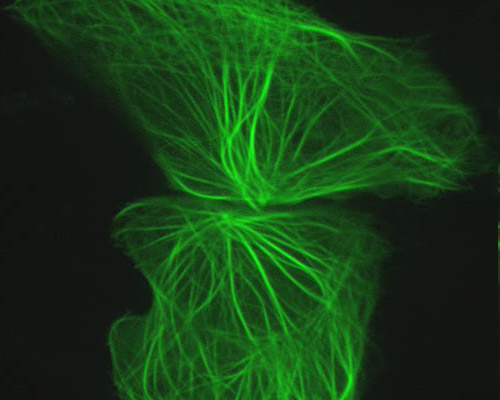Human Osteosarcoma with mEmerald-MAP4

Emerald is the superior GFP variant. It folds efficiently at 37 degrees Celsius in comparison to its precursor, enhanced GFP. It also exhibits an extremely fast bleaching component initially, but after this early phase, its photostability decays at a rate analogous to that of EGFP. The human osteosarcoma cells (U-2 line) featured in this digital video sequence were tagged with mEmerald fused to MAP4, visualizing the intracellular microtubule network. Ubiquitous in almost all cell types, MAP4 is a microtubule-associated protein (MAP) that binds to the tubulin subunits that comprise microtubules.
mEmerald is a high performance variant of EGFP, which is itself an enhanced version of GFP, the green fluorescent protein initially isolated from the jellyfish Aequorea victoria. Although the intrinsic brightness and photostability of mEmerald are superior to that of EGFP, the newer fluorescent protein does contain a fast photobleaching component that can be problematic in certain quantitative imaging applications. Excitation and emission maxima of mEmerald occur at 487 nanometers and 509 nanometers, respectively.



